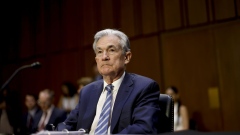Aug 11, 2021
CPI report can’t settle the big inflation debate
, Bloomberg News
Continued strong gains for inflation in the months ahead: Senior economist
Interpretations of Wednesday’s consumer price index data, which in recent months has become as eagerly anticipated as the jobs report, are a reminder of why President Harry Truman once pleaded for “a one-handed economist,” adding that “all my economists say ‘on the one hand,’ then ‘on the other.’” Fortunately, most economists are likely to agree on one conclusion, and it suggests that the heightened inflation watch is far from over.
Let’s start with the numbers. Monthly inflation for July came in at 0.5 per cent for the headline rate, down from 0.9 per cent for June, and 0.3 per cent for the core, also down from 0.9 per cent. This took the annual rates to 5.4 per cent, unchanged at a 13-year high, and 4.3 per cent, down from 4.5 per cent. Relative to expectations, the headline number was in line with the consensus forecast while the core was slightly lower, reversing the consistent one-sided data miss that has persisted since March. Finally, within the overall numbers, there were notable — and far from uniform — moves in individual components.
The “transitory” inflation camp — that is, those who view the current surge in inflation as temporary and reversible within the next few months — will take comfort from the retreat of items that have been chief contributors to the surge in inflation, such as used-car prices and airfares. They will argue, rightly, that such components will most likely detract from inflation in the months ahead. Also, the recent surge in COVID-19 infections, because of the delta variant, is likely to cool some of the pressures coming from “demand pull” inflation in the pipeline.
The other camp, whose adherents worry about the potential damage to economic well-being and financial stability that will occur the longer it takes for the inflation dynamics to exhaust themselves or be controlled by the Federal Reserve, will note that despite the declines in such components, high annual rates remain largely unchanged. This is because some other items, including particularly sensitive ones such as food, show gains. They may also point to others, such as restaurants and health care, as highlighting the initial stages of “wage-push” inflation where pipeline pressure is notable and continues to build.
The reality is that the new data does not provide a strong enough basis for resolving this disagreement.
This should not come as a big surprise as the difference in viewpoints relates to three key unanswered questions: the extent to which the U.S. economy is going through structural change, particularly with respect to the supply side; the extent to which a backward-looking expectation formation is evolving for wages and prices; and how precariously offside the positioning is for various components of the economy and markets.
The majority of people would readily agree that much more data, starting with the producer price index on Thursday, will be required to shed additional light on how high inflation will be and for how long. In the meantime, economists, market participants and policy makers would be well advised to keep an open mind. To the extent this is viewed as too close to Truman’s mocking characterization of economists, it would be better to tilt toward what company after company has been saying about cost and price pressures rather than rely on macroeconomic models that inevitably struggle to capture pandemic-related changes.



